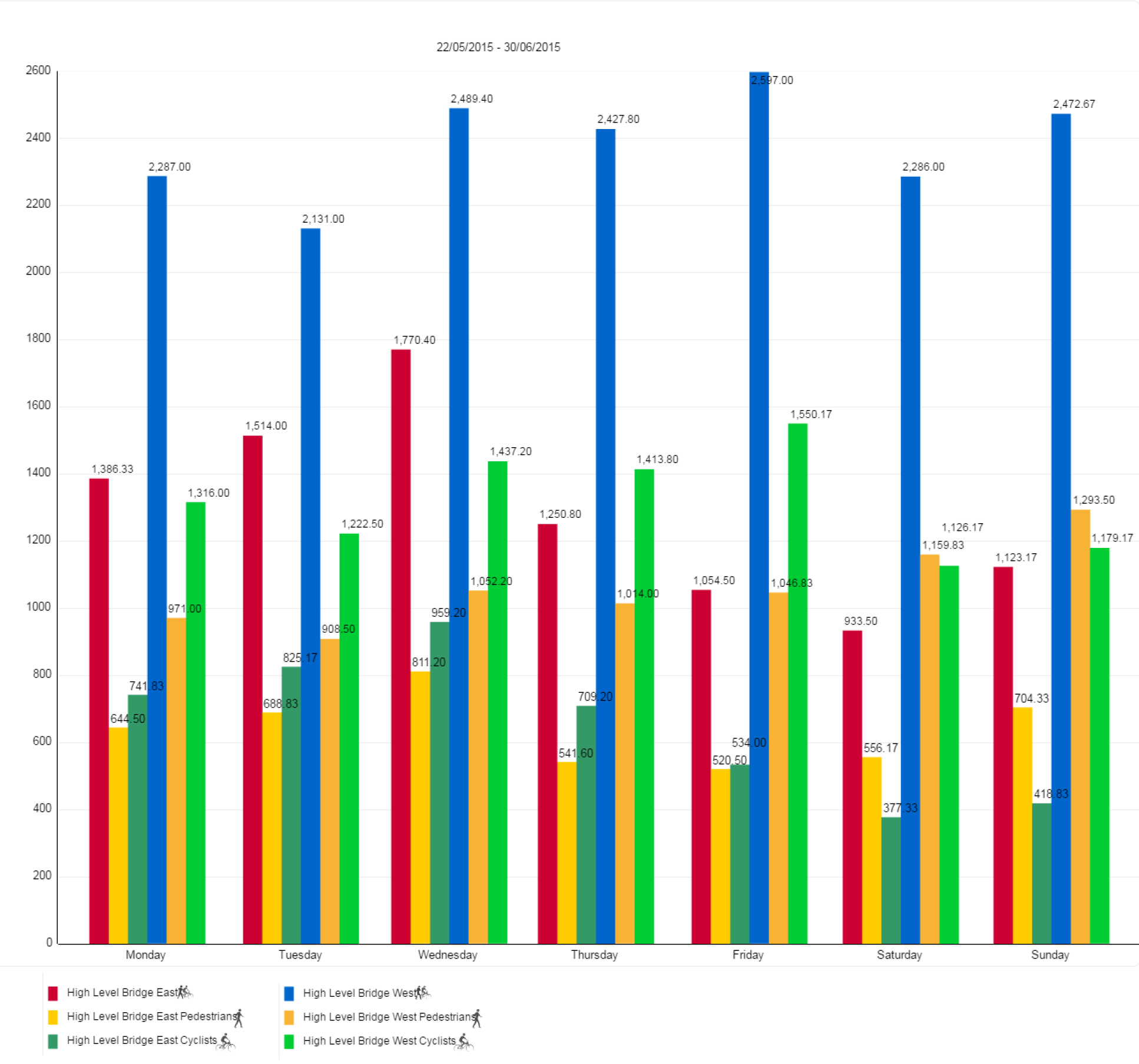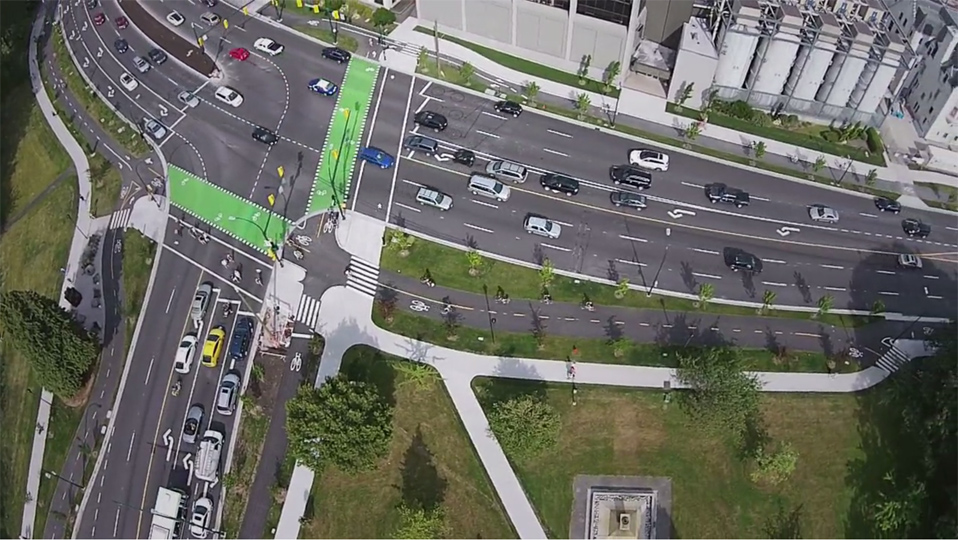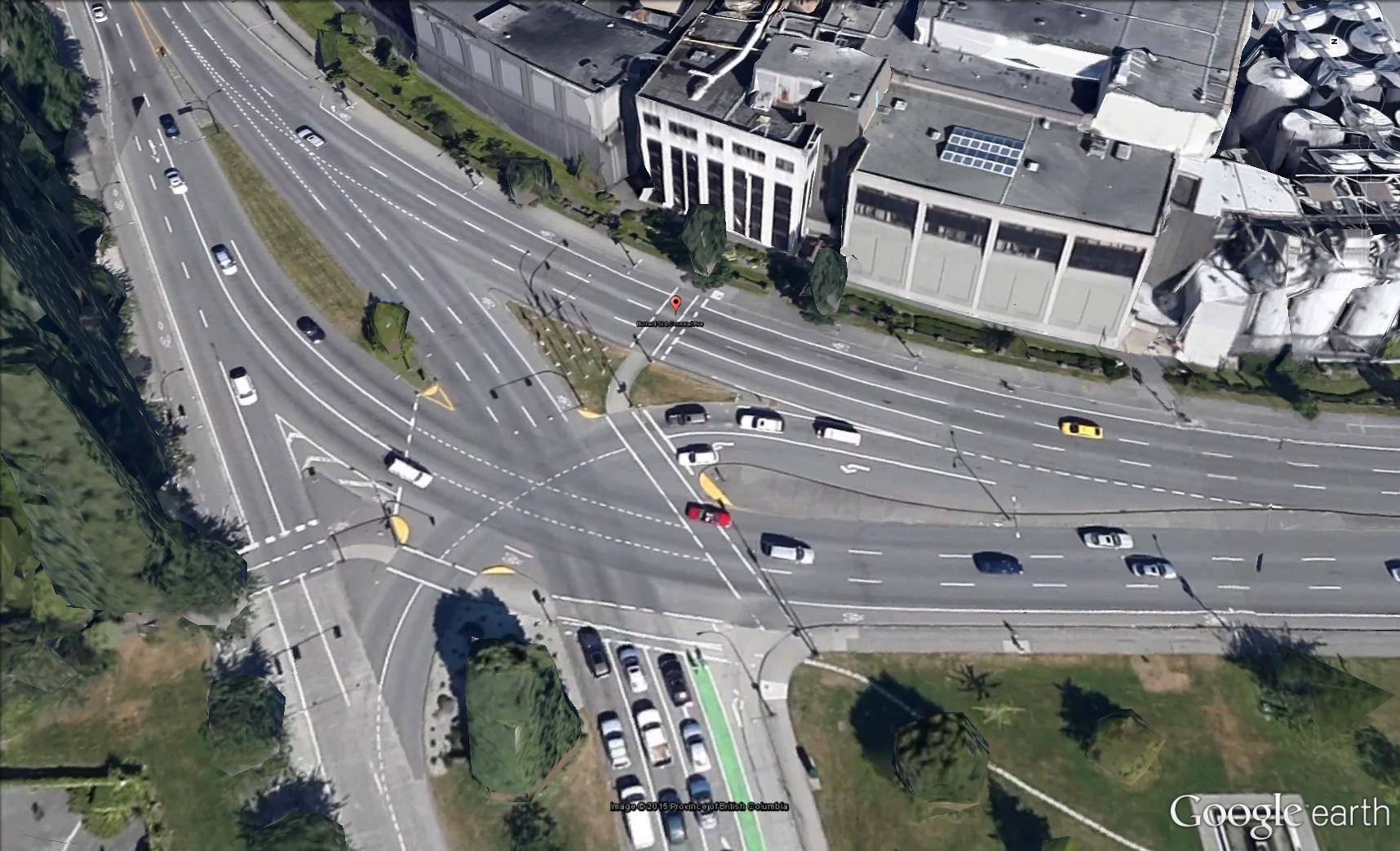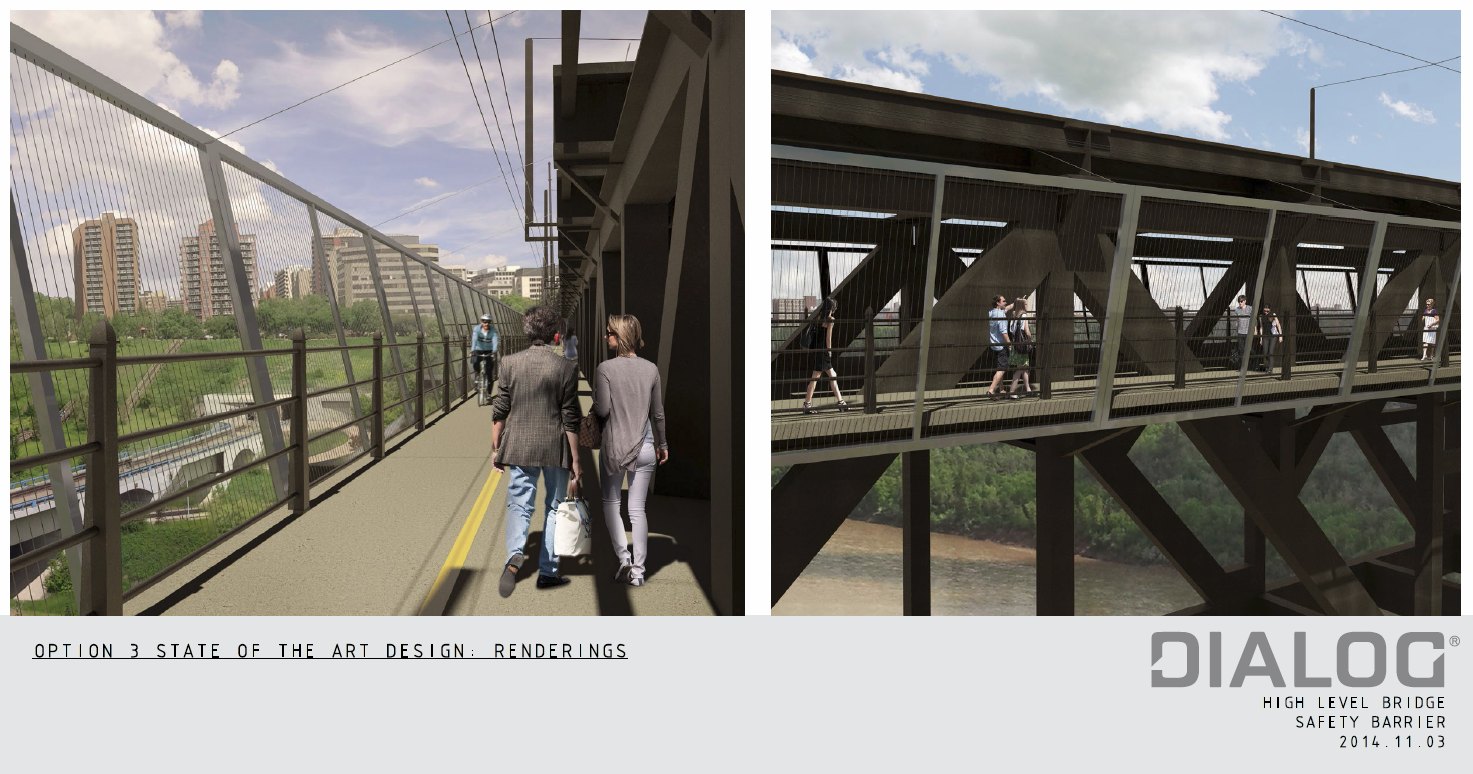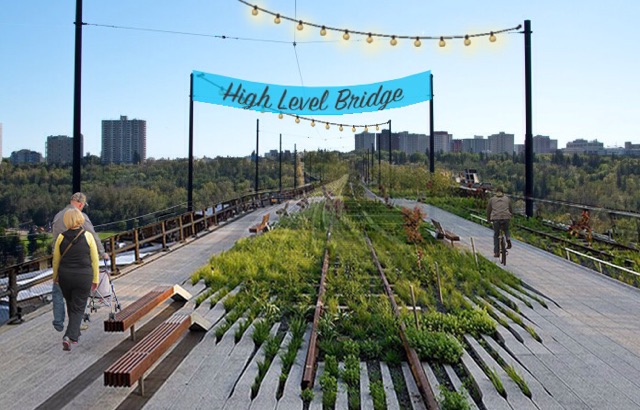In the last two weeks, we have received nearly 60 reports of collisions or near-misses on the High Level Bridge.
In Monday's Mayor's Q & A on CBC Edmonton AM, Mayor Don Iveson was asked about safety issues on the High Level Bridge. He said, "If it becomes necessary...that we have to turn the east side into a proper sidewalk and keep the west side as the shared-use pathway that you can continue to ride, that's something that will be evaluated and decision will be made in due course."
A. It may come to that on High Level - especially on the east side -- due to the new suicide barriers causing traffic hazards
— Edmonton AM (@EdmAMCBC) July 11, 2016
We do not support making the pathways single-use or single-direction, for several reasons:
-
The City is trying to encourage more people to walk and bike. During rush hour, both sides of the High Level Bridge were congested even before the installation of the suicide barriers. Now, both sides are significantly reduced in width and capacity.
The High Level Bridge is the busiest cycling route in the city, with 3000-4000 users daily, most of them on bike, sharing less than 5 metres of width between both sides of the bridge. As the city grows (in the next 25 years, downtown Edmonton’s employment will grow to 91,000) and more people walk or bike, and as more people are encouraged to ride through proper infrastructure, these numbers will just continue to grow. Further reducing the capacity of the bridge for all these users is self-defeating and directly opposes the City's own goals, visions, and efforts.
-
Most of the current conflicts can be resolved with courtesy and awareness for users: cyclists slowing down when passing, ringing bells, and yielding the right of way to pedestrians, with pedestrians staying to the right and single-file. This retains the flexibility for all users to access the bridge, and allows people to exercise discretion. Many of the conflicts can be reduced through education; those who are impervious to etiquette and education will also be unlikely to comply with new, unenforced rules, while the rest would be punished without benefit.
-
People walking their bikes across the path would further increase congestion, as more users would be bottlenecked on the bridge, and a person walking a bike is twice as wide as a mounted rider.
-
There are indisputable design problems with the suicide rails that increase the risk and severity of collision and injury. Both east and west sides are now below the City's own standards for minimum required widths. Addressing these problems by improving design is the correct solution: not further punishing pedestrians or cyclists because of bad design.
-
The intersection of Saskatchewan Drive and 109 St can take up to 3 minutes to cross from the east side to the west side, sometimes requiring waiting through 3 light cycles, which currently prioritize car traffic (including phases where cars are moving but no pedestrians are allowed to move in any direction). There are also 6 turning lanes at that intersection, which increases the risk to pedestrians and cyclists.
The traverse at the north end at 97 Ave is even worse: a walking detour of 300m and again waiting for a minimum of two light cycles to cross the streets, including a free-flow turning lane.
With access limited to one side of the bridge, many users would have to cross 109 St at both ends every time, adding 5-10 minutes just to get to the right side of the street. The narrowed pathways already deter people from walking and biking. Creating even more barriers would exacerbate the problem.
Walking your bike across the High Level Bridge adds 9 minutes to your trip compared to cycling at a moderate speed of 20km/hr.
In comparison, reducing the speed limit on Whyte Ave between 112 St and 75 St from 50 km/hr to 30 km/hr would make conditions for pedestrians, drivers, and cyclists much safer, while only adding 4 minutes of travel time (assuming free flowing traffic with no lights, a condition which never happens; in practice, the travel time change would be even less than 4 minutes):
@doniveson We all thought you were supposed to be good at math.#yegbike pic.twitter.com/lfK3huNswW
— chris - sᴉɹɥɔ (@newfangl3d) July 12, 2016
There are several solutions that can help improve safety and comfort for pedestrians and cyclists using the bridge, without punishing either:
Put additional resources into completing the installation of the suicide barriers sooner rather than later. Construction began in September 2015 and was originally scheduled to be complete by June 2016: already a very long timeline to install two fences. As of July 12, 2016, it is still not complete. The City has announced a "tentative" opening date of July 18.
A cheap, fast safety improvement would be the installation of "rub rails": railings that are designed to protect against handlebars catching on the posts. With the right design, they can reduce the risk and severity of collisions by removing hard right angles, without further narrowing the paths.
If, as an interim measure to address immediate safety issues, the City wishes to make one side pedestrian-only, it must first improve both the north and south crossings of 109 St. We proposed a list of improvements to the south intersection last year. Vancouver improved its own anti-pedestrian intersection of Burrard and Cornwall in 2014.
Although it doesn't address safety issues, the user experience of the existing suicide barriers could be vastly improved by applying the City's Percent for Art program to create a more humane space, turning the imposing barriers into part of an art piece. The project had a budget of $3 million, so under the policy, up to $30,000 could potentially be available for art.
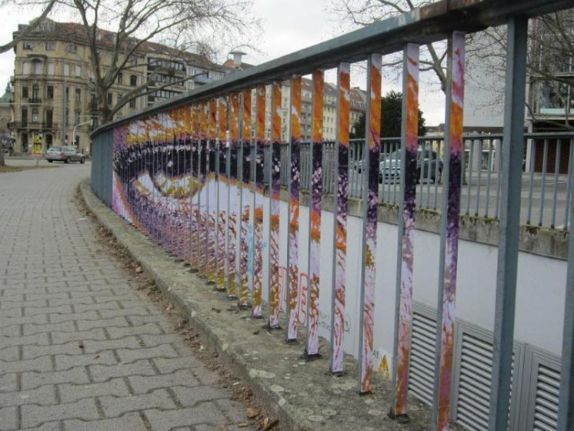
Part of the longer-term solution will be to replace the existing suicide barriers with one of the better options that were initially presented, which don't narrow the walkways:
Another advantage to this design is that it can also protect against suicide attempts from the upper deck.
Opening the upper deck to create a park, shared with pedestrians and the streetcar, and possibly cyclists, will alleviate pressures from the side paths, while also creating a signature public space for Edmonton.
The width of the upper deck is over 10m; it used to support two streetcars and a freight train passing simultaneously:
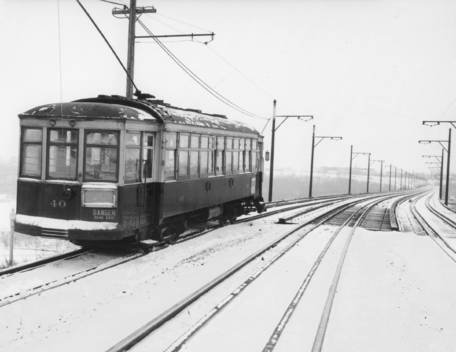
Scaling off of google to get some context for #yegbike/#yegwalk pic.twitter.com/tjkb7CBMSq
— chris - sᴉɹɥɔ (@newfangl3d) July 7, 2016
In his Q&A, Mayor Iveson mentions that the City of Edmonton has a lease from the Province for the upper deck of the High Level Bridge, which the Province holds for the possibility of future high speed rail. We've already invested heavily to extend LRT to south Edmonton; making a rail connection at the end of the LRT line makes far more sense than blasting a high speed train through central Edmonton.
Creating a public park for all Edmontonians, including the thousands that cross the bridge daily on foot or bike, and the many thousands more who will come just to enjoy a High Level Park year-round, is a far better use of this iconic bridge.
Allan Bartman, City supervisor with Infrastructure/special projects, said of the suicide barriers, including the lack of consultation and the design's negative impact on safety and accessibility: "We take congestion and public concern seriously, and while narrowed sidewalks aren't preferable, we're happy with the project. The goal was to get supplemental railing up sooner than later, to deter suicide attempts, within the budget and timeline."
Hopefully the City can be consistent in this philosophy, and apply it to roadways as well: narrowing roadways to install protected bike lanes sooner rather than later, to prevent traffic deaths, even if it means a shorter consultation period or fewer on-street parking stalls.


